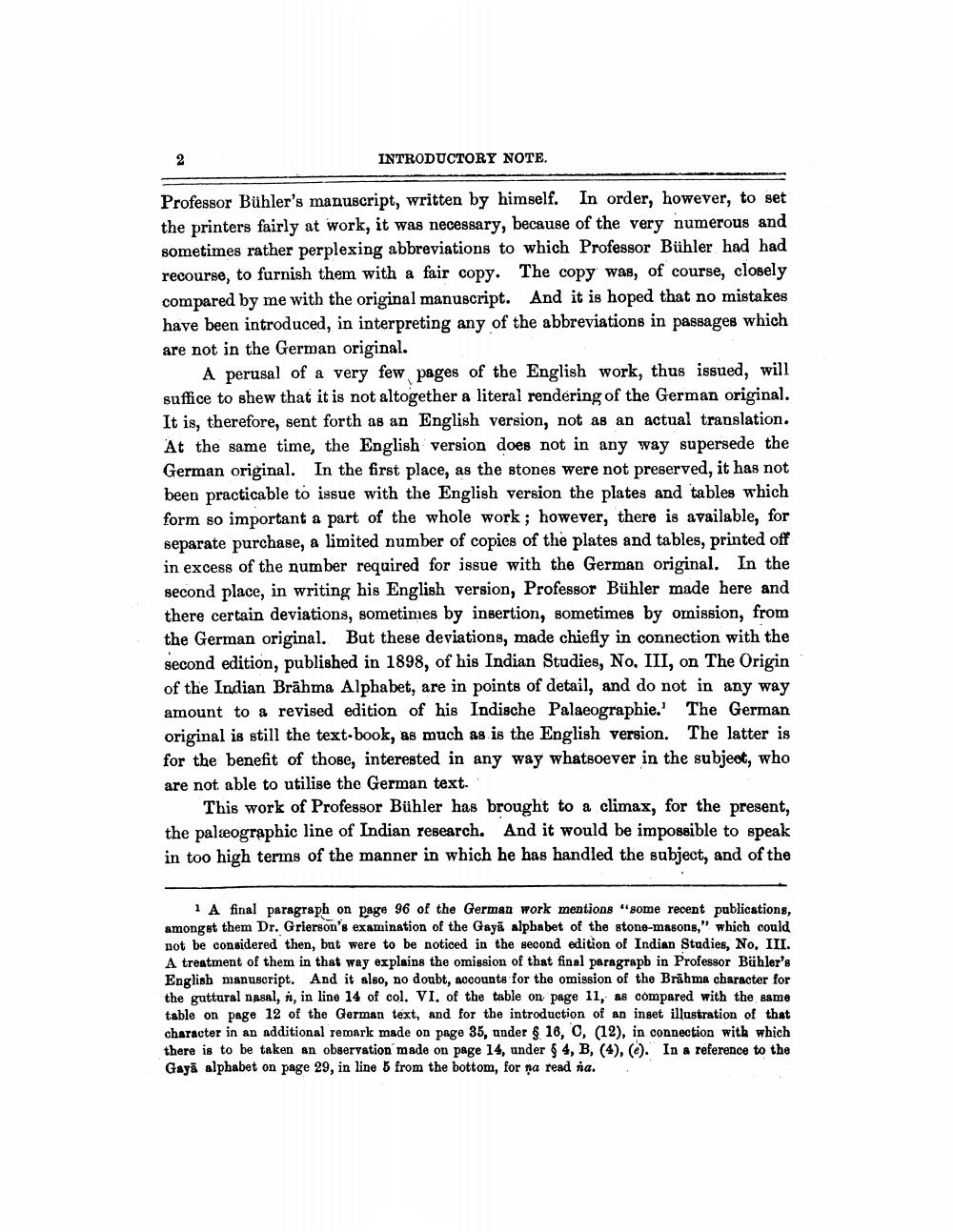________________
2
INTRODUCTORY NOTE.
Professor Bühler's manuscript, written by himself. In order, however, to set the printers fairly at work, it was necessary, because of the very numerous and sometimes rather perplexing abbreviations to which Professor Bühler had had recourse, to furnish them with a fair copy. The copy was, of course, closely compared by me with the original manuscript. And it is hoped that no mistakes have been introduced, in interpreting any of the abbreviations in passages which are not in the German original.
A perusal of a very few pages of the English work, thus issued, will suffice to shew that it is not altogether a literal rendering of the German original. It is, therefore, sent forth as an English version, not as an actual translation. At the same time, the English version does not in any way supersede the German original. In the first place, as the stones were not preserved, it has not been practicable to issue with the English version the plates and tables which form so important a part of the whole work; however, there is available, for separate purchase, a limited number of copies of the plates and tables, printed off in excess of the number required for issue with the German original. In the second place, in writing his English version, Professor Bühler made here and there certain deviations, sometimes by insertion, sometimes by omission, from the German original. But these deviations, made chiefly in connection with the second edition, published in 1898, of his Indian Studies, No, III, on The Origin of the Indian Brahma Alphabet, are in points of detail, and do not in any way amount to a revised edition of his Indische Palaeographie.' The German original is still the text-book, as much as is the English version. The latter is for the benefit of those, interested in any way whatsoever in the subject, who are not able to utilise the German text.
This work of Professor Bühler has brought to a climax, for the present, the paleographic line of Indian research. And it would be impossible to speak in too high terms of the manner in which he has handled the subject, and of the
1 A final paragraph on page 96 of the German work mentions "some recent publications, amongst them Dr. Grierson's examination of the Gaya alphabet of the stone-masons," which could not be considered then, but were to be noticed in the second edition of Indian Studies, No. III. A treatment of them in that way explains the omission of that final paragraph in Professor Bühler's English manuscript. And it also, no doubt, accounts for the omission of the Brahma character for the guttural nasal, i, in line 14 of col. VI. of the table on page 11, as compared with the same table on page 12 of the German text, and for the introduction of an inset illustration of that character in an additional remark made on page 35, under § 16, C, (12), in connection with which there is to be taken an observation made on page 14, under § 4, B, (4), (e). In a reference to the Gaya alphabet on page 29, in line 5 from the bottom, for na read na.




